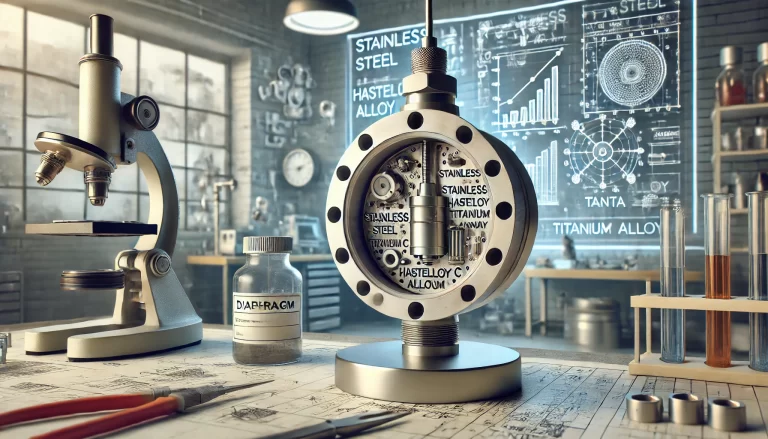Selecting the appropriate diaphragm for a pressure transmitter is a critical step that directly influences the device’s measurement accuracy, stability, service life, and long-term reliability. Below are detailed guidelines to assist in the selection process:
1. Understand the Properties of the Measured Medium
The characteristics of the medium to be measured play a significant role in diaphragm selection. Key factors include:
- Chemical Composition: Identify whether the medium contains corrosive elements such as salts, acids, or bases.
- Temperature: Consider the operating temperature of the medium.
- Viscosity: Assess whether the medium is viscous or prone to sticking.
- Corrosiveness: Determine the level of corrosiveness, as this will dictate the diaphragm material.
For example:
- For highly corrosive mediums like saline water or acidic environments, materials such as Hastelloy C, titanium alloy, or tantalum diaphragms are recommended for their superior resistance.

2. Choose the Appropriate Diaphragm Material
The diaphragm material is essential for ensuring both performance and longevity. Common materials and their characteristics include:
a. Stainless Steel (e.g., 316L)
- Features: Excellent corrosion resistance, robust mechanical strength.
- Applications: Suitable for most industrial applications due to its affordability and versatility.
- Limitations: Not ideal for highly corrosive environments.
b. Hastelloy C
- Features: Excellent resistance to acidic environments except for high-concentration sulfuric and nitric acids.
- Applications: Commonly used in environments containing phosphoric acid or similar compounds.
c. Titanium Alloy
- Features: Resistant to a wide range of mediums, including seawater.
- Applications: Suitable for most industrial applications.
- Limitations: Not suitable for hydrofluoric acid or strong alkaline environments.
d. Tantalum
- Features: Exceptional corrosion resistance.
- Applications: Ideal for highly corrosive mediums, particularly in chemical processing.
- Limitations: High cost.
e. Ceramic (e.g., Aluminum Oxide or Zirconium Oxide)
- Features: Good resistance to corrosion; commonly used for specific chemical applications.
- Limitations: Moderate long-term stability and higher cost.
3. Consider Environmental Factors
The operating environment significantly impacts diaphragm performance:
- Hydrogen Content: For mediums containing high hydrogen levels (70%-100%), select gold-coated diaphragms to avoid hydrogen embrittlement.
- High Temperatures: For environments with temperatures ranging from 200°C to 400°C, use high-temperature diaphragms to prevent silicone oil vaporization, which can lead to measurement inaccuracies.
4. Precision Requirements
Applications requiring high-precision measurements demand diaphragms with appropriate thickness, material, and shape to meet accuracy standards. Always verify the diaphragm’s compatibility with the specific accuracy class of the pressure transmitter.

5. Installation and Maintenance
Ease of installation and maintenance is crucial, especially in challenging environments. Consider the following:
- Flat Diaphragm Designs: These are ideal for harsh conditions and are easy to clean and maintain.
- Removable Diaphragms: Facilitate quicker replacements and reduce downtime during servicing.
6. Special Applications
In industries such as petrochemical, pharmaceutical, or food processing, additional considerations may apply:
- Custom Designs: Some applications may require customized diaphragms for unique operating conditions.
- Compliance with Standards: Ensure that the selected diaphragm material meets industry-specific standards for safety and reliability.
Case Study: Chemical Processing Plant
Scenario: A chemical plant required pressure transmitters to measure highly corrosive acids. Solution: Tantalum diaphragms were chosen for their excellent resistance to aggressive chemical attacks. The flat diaphragm design allowed for easy cleaning during maintenance, ensuring reliable performance and extended lifespan despite the harsh environment.
Conclusion Selecting the right diaphragm for a pressure transmitter involves a comprehensive evaluation of the medium’s properties, environmental conditions, precision requirements, and cost. By carefully considering these factors and leveraging appropriate materials, you can significantly enhance the performance, safety, and longevity of the device.
